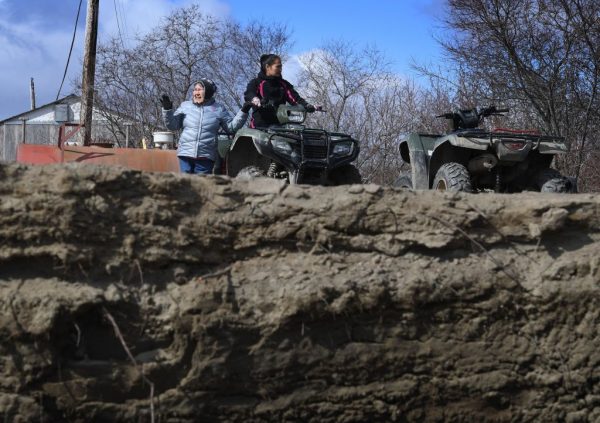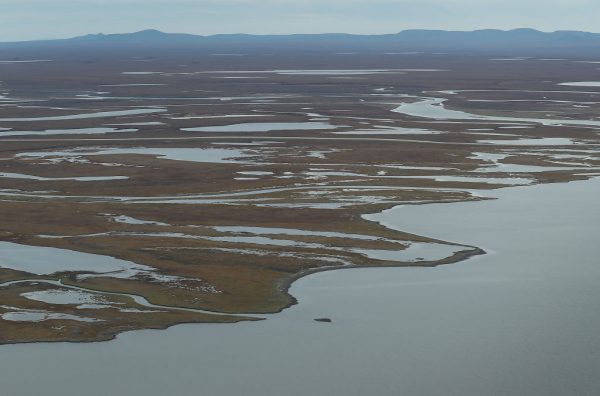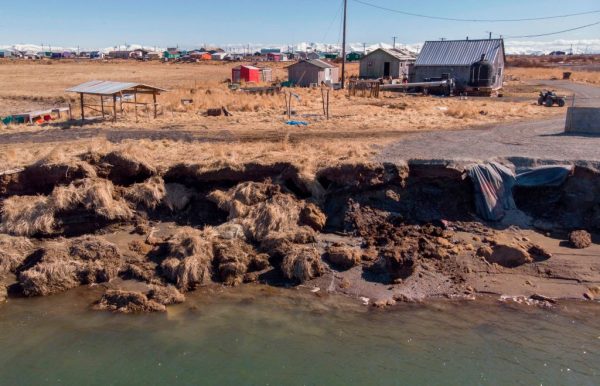Arctic Sinkholes Appearing Within Seconds After Big Permafrost Melt
The permafrost in some parts of the Arctic are melting much faster than expected, with potentially terrible results.
While global warming is a well-accepted fact in scientific circles, and experts have been creating models for its progression for years, there’s reason to believe that those models may not be entirely accurate.
Permafrost is the word that described ground that is frozen for at least two years at a time, and is a mix of frozen rocks, sand, and soil.

Sometimes it can melt so quickly that it causes many hazards to the environments, such as landslides and large sinkholes, and it can essentially drown the forests in part of the Arctic region, according to a new study, causing major changes in the landscape in a relatively brief period of time.
In addition to frozen soil, permafrost also has a lot ground ice, which means that it can thaw rapidly. When that ice melts quickly, it leaves behind eroded, marshy ground called thermokarst.
Research suggests that thermokarst has not been adequately taken into account in experts’ models of climate change when estimating how much carbon is being released into the atmosphere by melting permafrost.

According to the new research, it could be pushing out double the amount of carbon that was previously believed.
When water is frozen, it takes up more space than when it is in liquid form. When Arctic permafrost melts quickly, whether from climate change or events like wildfires, the water released quickly turns the ground into soupy mud and can transform previously solid ecosystems into marshes or lakes in a matter of months to years.
When it melts more slowly, the change in the ground happens at a rate of centimeters over the course of years, causing much more gradual changes to the ecosystem.
The other problem is that global warming is known to be caused by an excess of carbon in the planet’s atmosphere. As swathes of permafrost melt, they release even more carbon, causing the process to accelerate.

Even though permafrost is only about 15% of the Earth’s soil, it contains about 60% of all the carbon in the ground, worldwide. The cycle where carbon in the atmosphere causes the permafrost to melt, releasing more carbon into the atmosphere is called climate feedback.
According to the Weather Channel, a study was published last July, saying that record high summer temperatures in the Canadian High Arctic between 2003 and 2016 have been responsible for permafrost melt at a rate that’s 240% higher than it was in previous years.
Just to provide a sense of the scale, the carbon released from 965,000 square miles of thermokarst can provide the same amount of climate feedback as 7,000,000 square miles of permafrost that melts more slowly.
https://www.youtube.com/watch?v=xLI980fr2K0
That speedier release of carbon emissions hasn’t been factored into most models of projected climate change. Many scientists predicted that the Arctic permafrost wouldn’t melt significantly for another 70 years, but failed to take into account the current rapid melting.
The thermokarst that’s left behind is soupy and not as flat as the frozen ground, being full of holes, hills, and small bodies of standing water. As the changes continue, new types of plant life are also beginning to show up, reflecting the changes in the ecosystem.
There are other changes, too, that affect the habitats, migration patterns, and diet of the local wildlife, as well as changes to both agriculture and the infrastructure built in the populated areas.
In parts of Canada, Alaska, and Russia, homes are sinking into the softened earth and roads are being moved by shifting land.
A dog pup that had been frozen in the ice for over eighteen thousand years
Exactly how large an impact these changes will have on existing climate models is still unclear, but one thing is certain; the major changes to the Arctic ecosystem is just the beginning of the changes that are increasingly being felt in many parts of the world.





